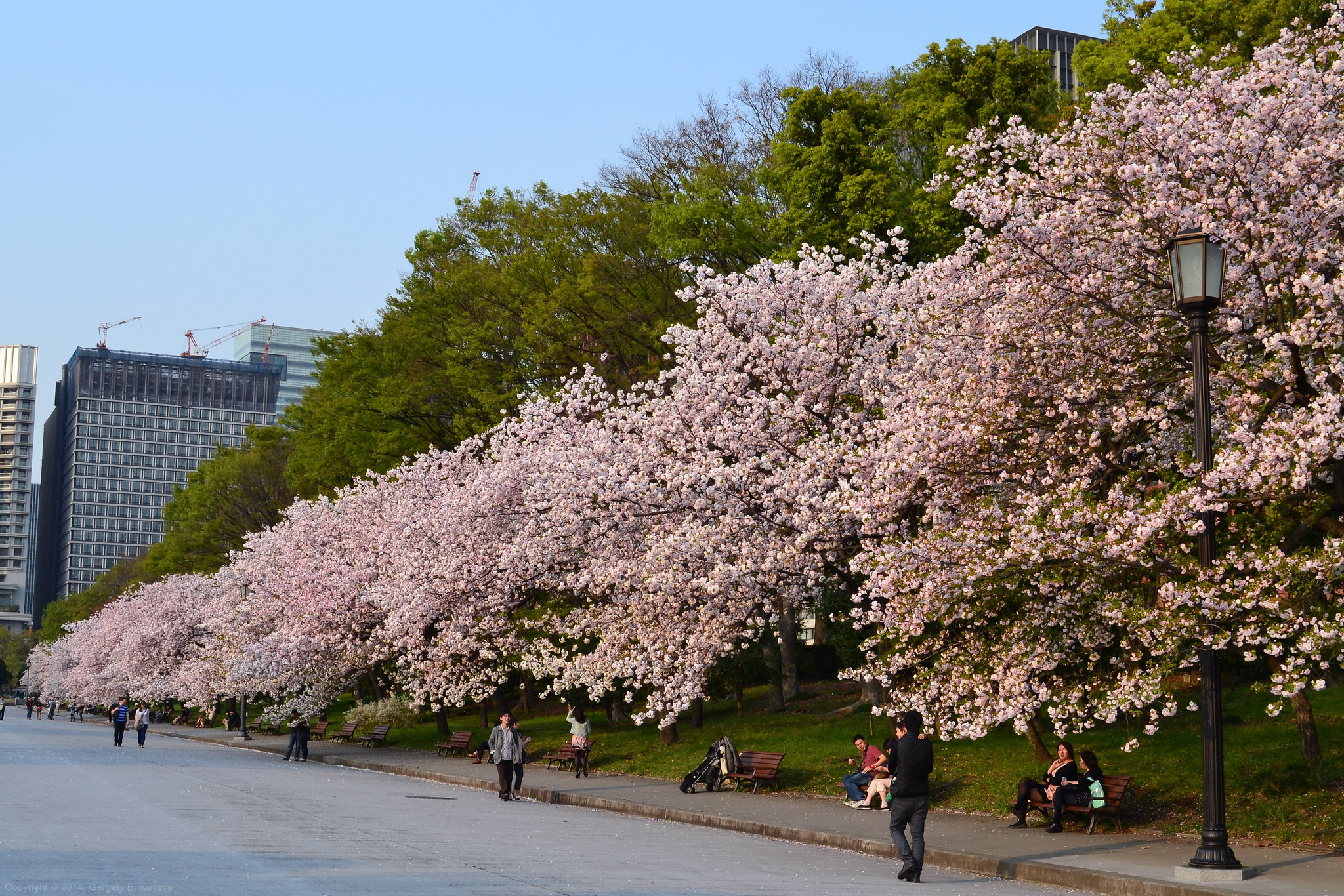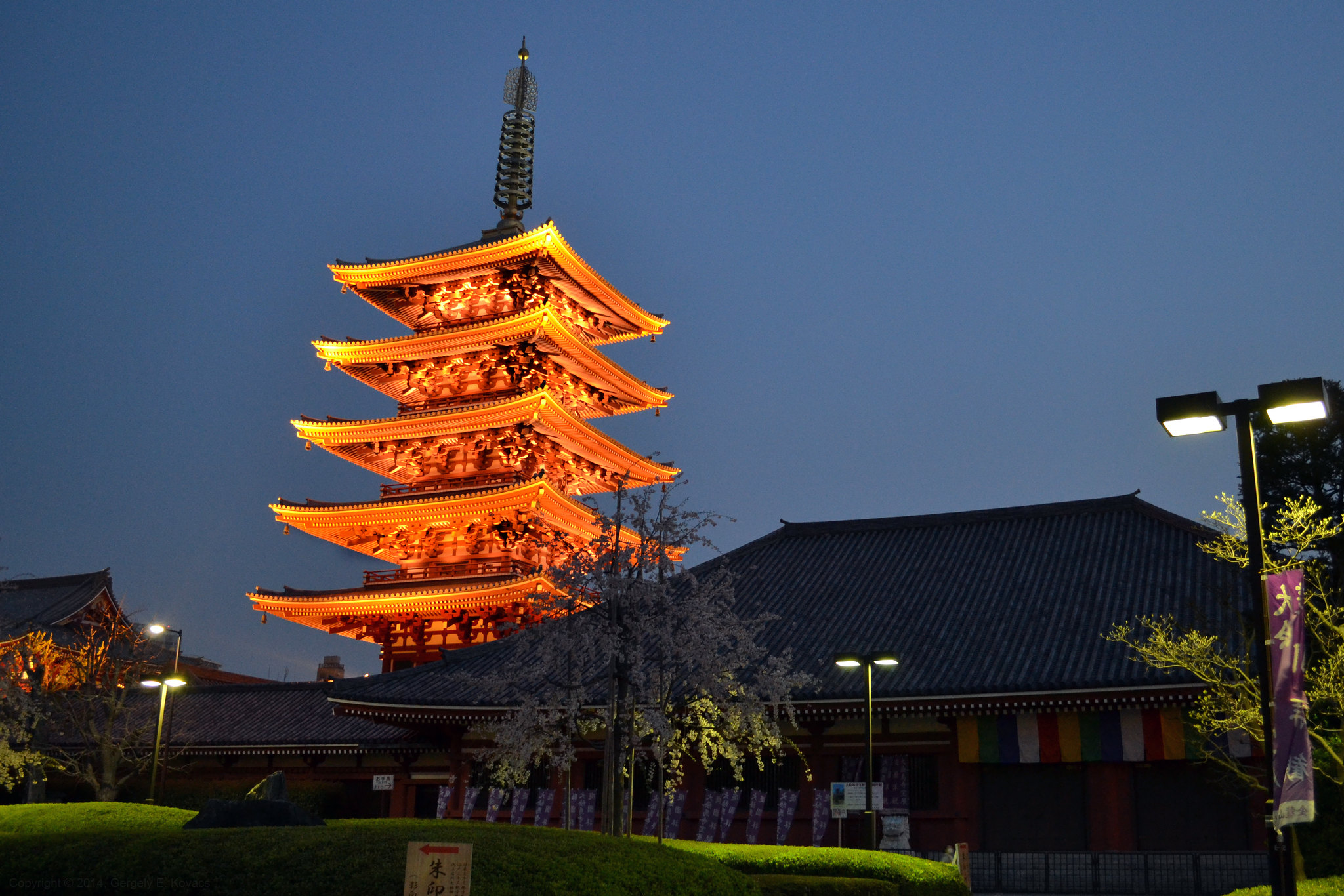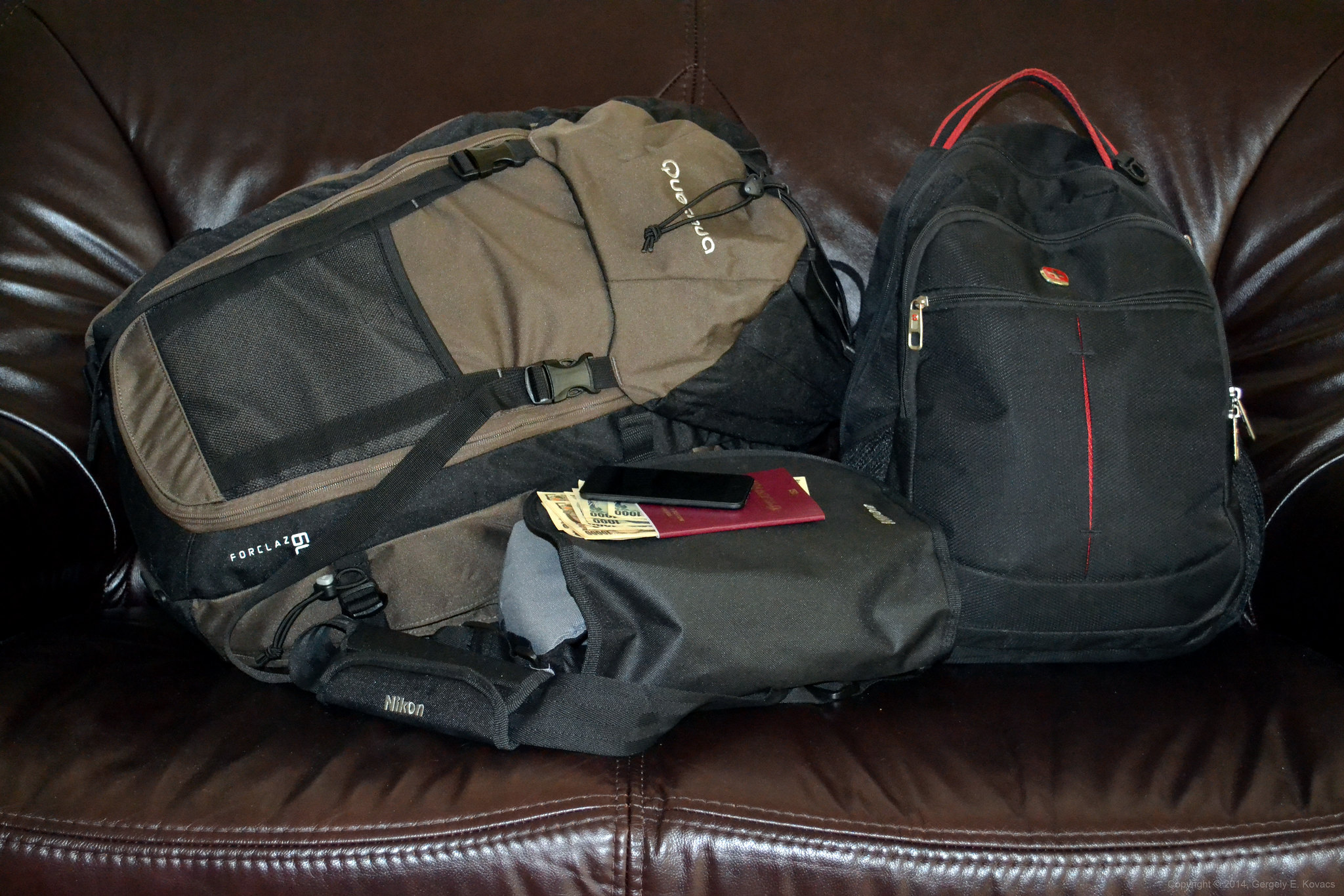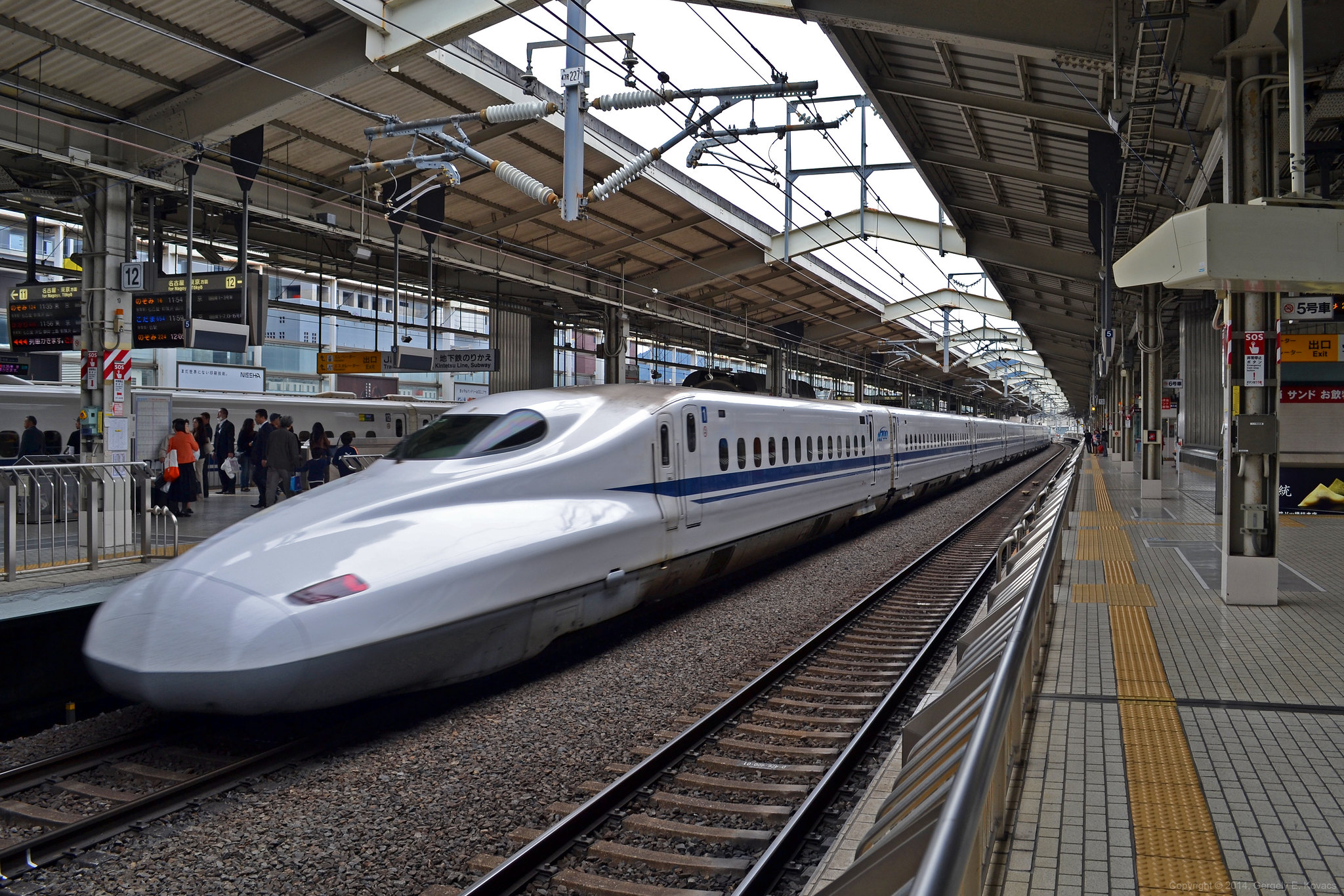
Backpacking is a fun and rewarding way to travel. It offers more opportunities, to immerse oneself in a foreign culture, than more traditional ways. Yet, for those who have never done it before, planning a backpacking trip may seem like a daunting task, especially if the target country is as exotic as Japan. Luckily, that is where this article comes in. Of course, I am by no means an expert, but I did go on an impromptu, month-long backpacking trip to Japan, during which I feel I had gained invaluable experiences that can be beneficial to others; especially if you, like me, go there for the first time. This is what this article is about.
When do I want to go?
I think I can say it pretty confidently that the best time to visit Japan is in the Spring, starting from mid-March until late April. Weather is ideal at this time--neither too humid nor too hot--and you will catch the blossoming of the cherry trees, perhaps the most well-known attraction in all of Japan. Unfortunately, as anything else in life, Spring too has its downsides. Since the admiring of the cherry trees is a world-renowned festivity, it is probably the busiest season, attracting the most amount of tourists. This means you will likely encounter more people than in any other season and will need to prepare earlier as accommodations fill up incredibly quickly.
While we are on the subject of crowds, make sure you leave the country before the so called Golden Week starts, which is when most Japanese people go on vacation, rendering virtually every shrine and tourist attraction impossible to visit. Golden week starts on April 29 and, as its name suggests, last for a week.
Lastly, some people would argue that an equally good time to visit Japan is in the Fall. Although you will miss the cherry blossoms, you will gain the opportunity to witness the countryside turn to a beautiful array of Fall colors. Not only that, but by the the time fall arrives, the typically humid Japanese summer should also wind down, presenting cool and clear weather. It is, therefore, the perfect time to visit Japanese gardens and the mountainous regions of the country.
How early do I need to start planning my trip?
Generally speaking: as early as possible! Lodgings fill up incredibly quickly--especially in the main tourist season--therefore, it is generally a smart idea to start booking months in advance; even a year might not be too early. We did our travel preparations fairly late, only two months before our departure, and our options were severely limited because of our late start. We often had to settle on less than ideal lodgings because the best hostels were already fully booked. Lastly, I do not think I have to tell anyone that plane tickets get more expensive the closer time gets to their departure date.
What do I want to see?
Obviously, this is a question that is entirely up to you. Since you have decided to go to Japan, you should have at least a vague idea of what you want to see. One simple advice I can give you, however, is to try to mix up the places you visit. For instance, even if you are super into manga and anime, do not spend all your time in Tokyo or Osaka; include a few smaller towns and out-of-place destinations to get a better, more varied experience of the country. Still, for the unlikely event of having trouble deciding what to see, I recommend visiting the website www.japan-guide.com, where you can browse between the most popular attractions broken down by region, type, and/or popularity. If nothing else, it should give you a solid foundation on which you can later build your itinerary.
Where should I stay?
Since you are going backpacking, I am going to assume you won’t be staying in expensive hotels. Luckily, Japan is full of youth and backpacker hostels that are both affordable and comfortable. You can expect anywhere from 10 to 30 dollars a night for an average shared dormitory, and since these places cater exclusively for foreigners, you will always find English-speaking staff able to help you with everything. Reserving your beds can easily be done online, and for this I recommend www.hostelworld.com and, to a degree, www.booking.com.
These sites are also helpful in choosing the right hostel. Since there are so many hostels in Japan, the level of comfort they provide fluctuates on a wide range. For the same amount of money you can be put into a dark hole with 15 other people with no air conditioning or a fairly comfortable small dormitory with lots of personal space. The rule of thumb is to always read the customer reviews as they can be invaluable in choosing the right hostel. My experience is that sometimes it is worth the extra 5-10 bucks to stay at a nicer and/or more conveniently located place than cheaping out and regretting later.
Also, make sure you stay at a place with security lockers. Although Japan is an incredibly safe place, hostels attract a lot of people from all around the world and, while most of them are super nice and upright fellows, you can never know who will occupy the bed next to yours. Keep your valuables safe!
What and how do I need to pack?
Since you will likely be on the move all the time, naturally, you want to pack lightly. Ideally, you should have one large backpack for your regular items--clothes, etc--and a smaller “carry-on” for drinks, food, your camera and other small articles. Almost every place we stayed in Japan had laundry facilities--even the cheapest hostels--so, bringing clothes for more than a week--or even four or five days--is definitely overkill in my opinion. Aside from clothes, you might also want to pack rain gear, a warm sweater--in case it gets cold--hiking shoes, and a towel as not all hostels give you one. Also, if you are not a heavy sleeper, you might want to pack a lot of earplugs as those hostels can be quite noisy sometimes. We actually stayed in one that shared a wall with a private karaoke bar; yes, a karaoke bar! All in all, whatever you pack, just keep in mind that you have to carry everything on your back.
Before we move on, however, we also need to talk about medications as they can be the source of some trouble in Japan. Since Japan has much stricter rules regarding medications than most Western countries, you need to be extra careful what you bring with you. If you take medications regularly, make sure you check an official source regarding this issue, such as the Tokyo U.S. Embassy’s website. Even some run-of-the-mill cold and allergy medications can get you into trouble at customs; so, make sure you know what to expect!
What about credit cards and money?
Simply put, Japan is not a credit card friendly country. While some convenient stores do accept credit and debit cards, most places do not--including many hostels. So, it is imperative to exchange at least a couple days--if not a week--worth of Yens before you depart. How much you need in a day, however, depends largely on your expenditures. If you plan on eating out every day, for instance, obviously you should have more cash with you than if you are willing to subside on 100 Yen onigiri rice balls and instant ramen.
Once in Japan, if you ever run out of cash, you need to keep in mind that regular Japanese ATMs do not take foreign cards. If you need to withdraw money, you have to go to a 7 Eleven or a Post Office; they have ATMs that take foreign cards.
Is Japan a safe country?
Yes; Japan is an incredibly safe country! Not only countless backpacker experiences support this argument, but virtually every global statistics involving crime. That, however, does not mean you can be careless. You will probably not get mugged on dark Tokyo street, but you still have to spend a considerable amount of time in hostels with people from all over the world. You should be careful and apply common sense, keeping your valuables with you at all times and, if it is not an option, using security lockers whenever available.
I do not speak Japanese. Will I be okay?
For the most part, yes. Although Japan is not an English-friendly country--very few Japanese people speak English--signs, maps, and ticket machines usually have English options, which are generally enough for foreigners to get around; in big cities at least. As you travel farther from the metropolises, however, signs and other English language guides become scarcer, which might give you some headache. One advice I can give you is to always be prepared. Before you depart to your next destination, for instance, always check online how to get there--using the public transportation option of Google maps or www.japan-guide.com, and even print out your itinerary if you can. It will be invaluable, should you find yourself alone and surrounded by Japanese signs and not a soul who understands you.
One personal note though: if you have the time and willingness, learning a little Japanese might not be a bad idea. Aside from giving you confidence, learning can be extremely fun. Before I went to Japan, I took the beginner courses at Japanese Pod 101.Com. For a few months before my trip, I used my morning commute to listen to the courses and managed to learn enough Japanese to ask for directions and carry out very basic conversations, all of which came handy during my trip. More than once, I was able to use my budding Japanese skill when we got lost and needed to ask for directions. Being able to speak a little Japanese also gave me confidence; I knew that, if everything else failed, I had something to fall back on; however limited it may may be.
What do I need to know about public transportation?
Although Japanese public transportation can be a little daunting at first, you can get used to it fairly quickly. In general, your fare is always based on the distance you traveled. You validate your ticket at the station you depart, and your fee will be based on what station you get off. Not too difficult, right? Wrong! The problem arises from the fact that you usually need to purchase your ticket in advance, and for that, you need to know what station you want to get off. Station names, however, are rarely displayed in any language other than Japanese, so, unless you read kanji fluently, you will have a hard time buying tickets. Luckily, there is an easy way to avoid this hassle.
The first thing you should do when you arrive in Japan is to go to a ticket machine--they can be found in most major transportation hubs, including the airport--and buy yourself a Suica or a Pasmo card. These are rechargeable travel cards that you can use in most public transportation, including subways, buses, and most local trains. They provide a unified payment system the various public transportation operators all agreed to accept. You just put your card to the reader when you enter the transit area and do the same when you exit; the system will automatically deduct your fare. Aside from long distance trains and some very small, rural operators, the cards are accepted throughout Japan. You can even use them at some vending machines and convenient stores as a debit card. And, should you ever run out of funds on your card, you can top it up at any ticket machine that accepts it.
Should I buy that Japan Railway Pass everyone talks about?
First of all, the Japan Railway Pass--or JR Pass in short--is a foreign tourist-only pass that allows you to use trains operated by JR, one of the major railway companies in Japan. You can find more information on the official JR Pass website. With that said, I am going to go against the crowd here and say that you should probably not buy it; or, at least consider it really carefully before you make the purchase. We did quite a thorough examination of our trip--especially since we moved around alot--and concluded it was not worth it--by quite a huge margin actually.
The problem with the JR Pass is that it is only good for JR operated trains. Most of the small local trains however--the ones you will likely use most of the time--are usually operated by small, local companies. In fact, the only time we used a JR line was when we traveled from Tokyo to Kyoto and back, and buying that ticket straight from the ticket office cost a fraction of the aforementioned pass.
Now, this is not to say that the Japan Rail Pass cannot be a good deal. If your route involves a lot of long distance, JR-operated lines than it might be well worth to buy the pass. Otherwise, I would just use local railways, most of which are a lot cheaper and more convenient than JR ones.
What to do in an emergency?
Luckily, I cannot speak first hand regarding this issue, but common sense dictates that you check the instructions of the embassy of your home country and keep their emergency number with you at all times. They will be able to help you, especially when there is a language barrier to tackle.







No comments:
Post a Comment